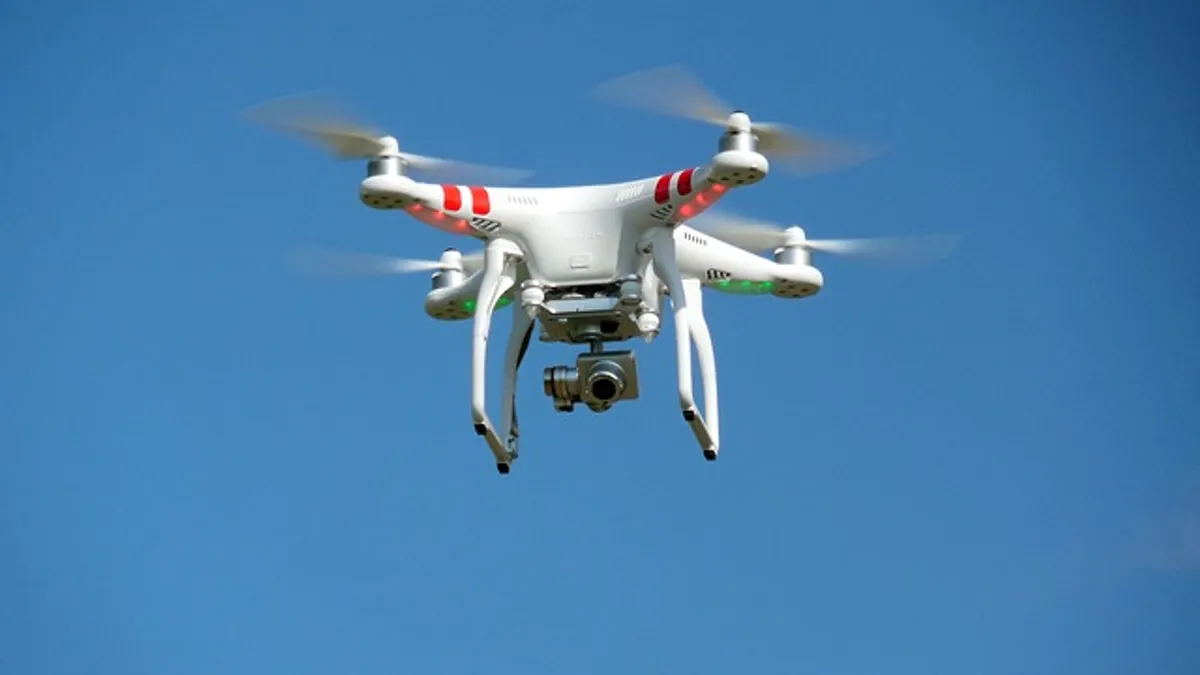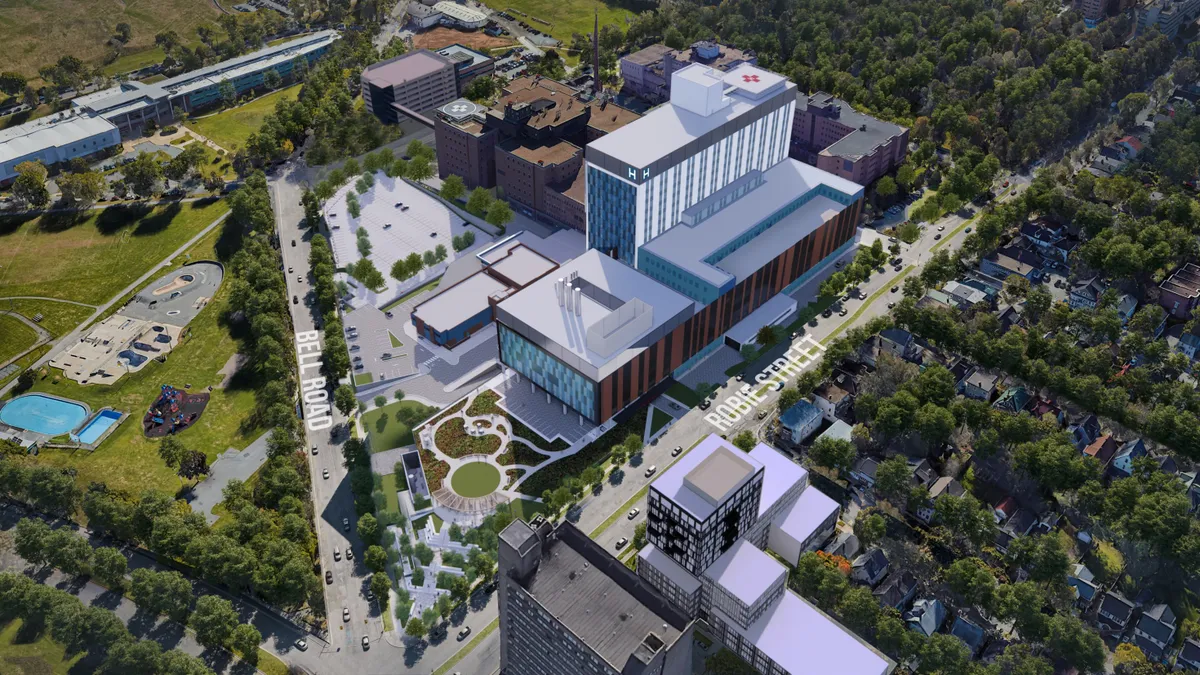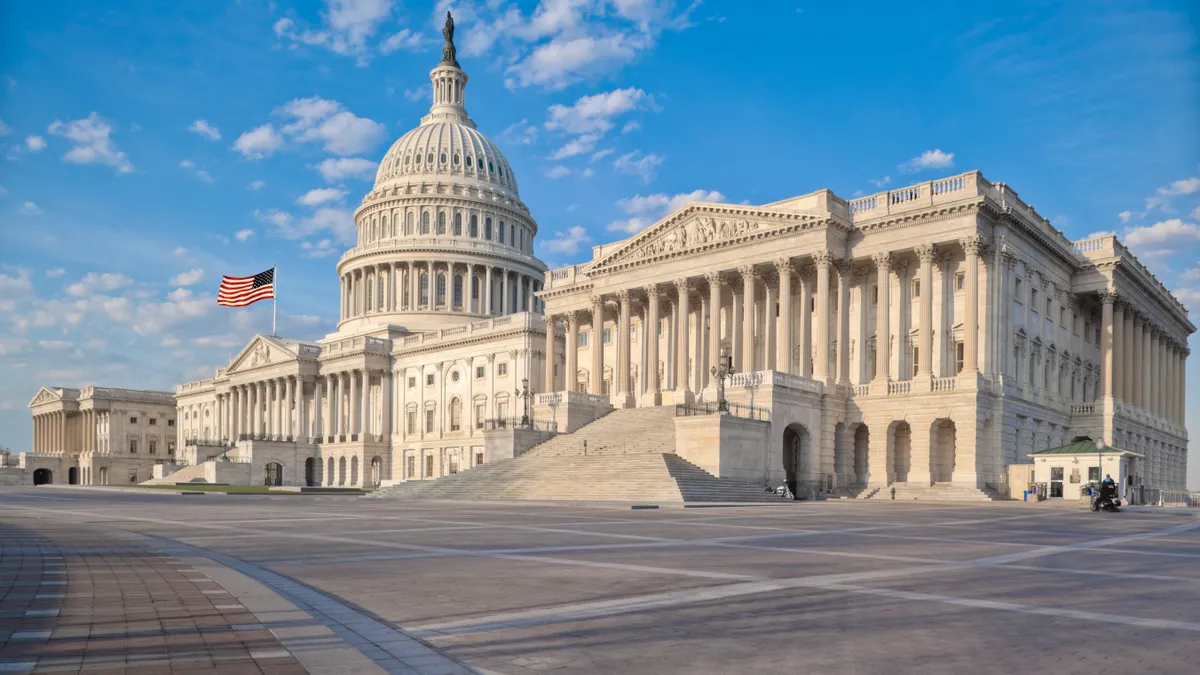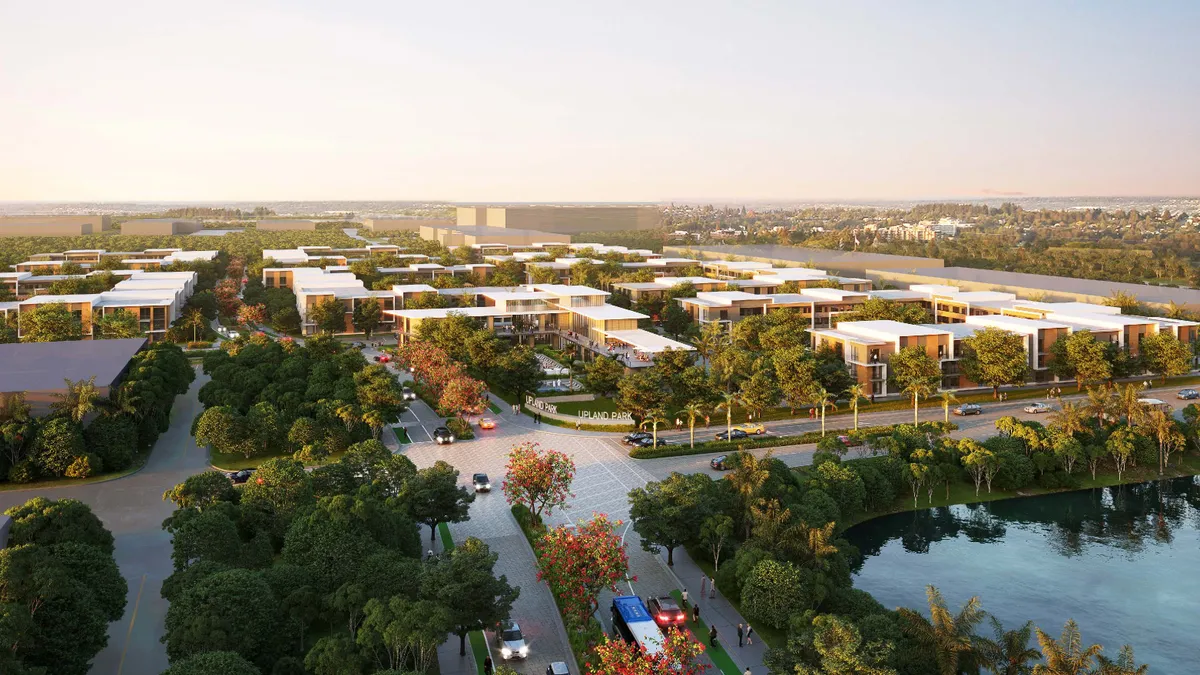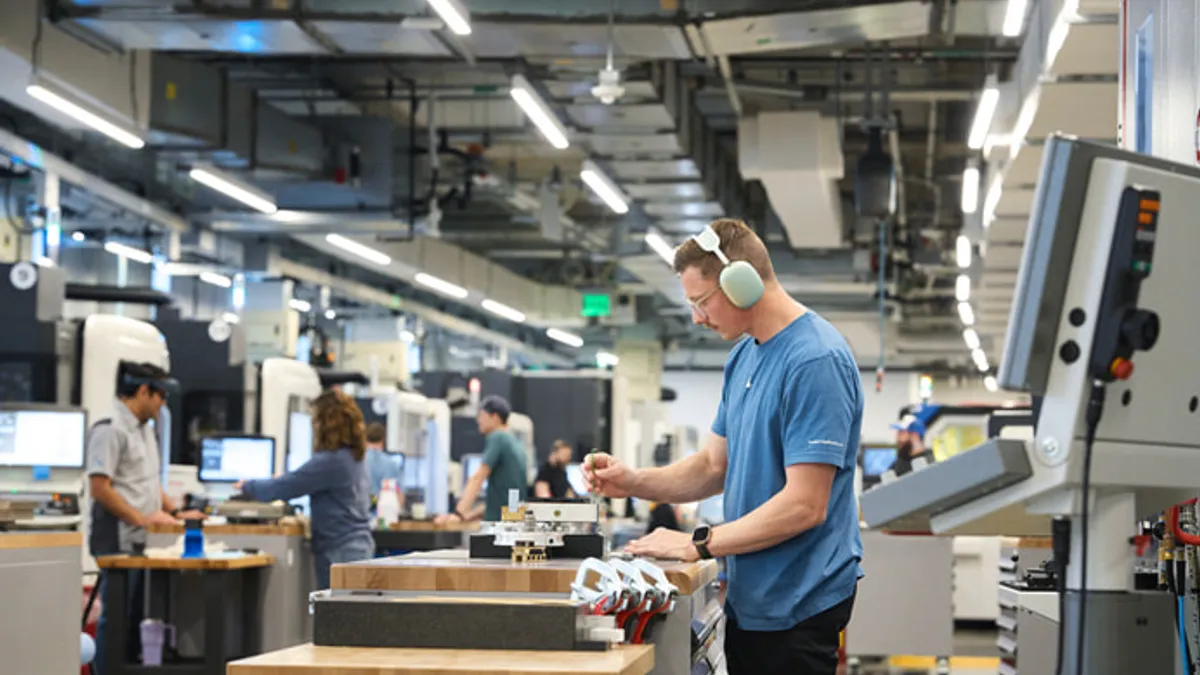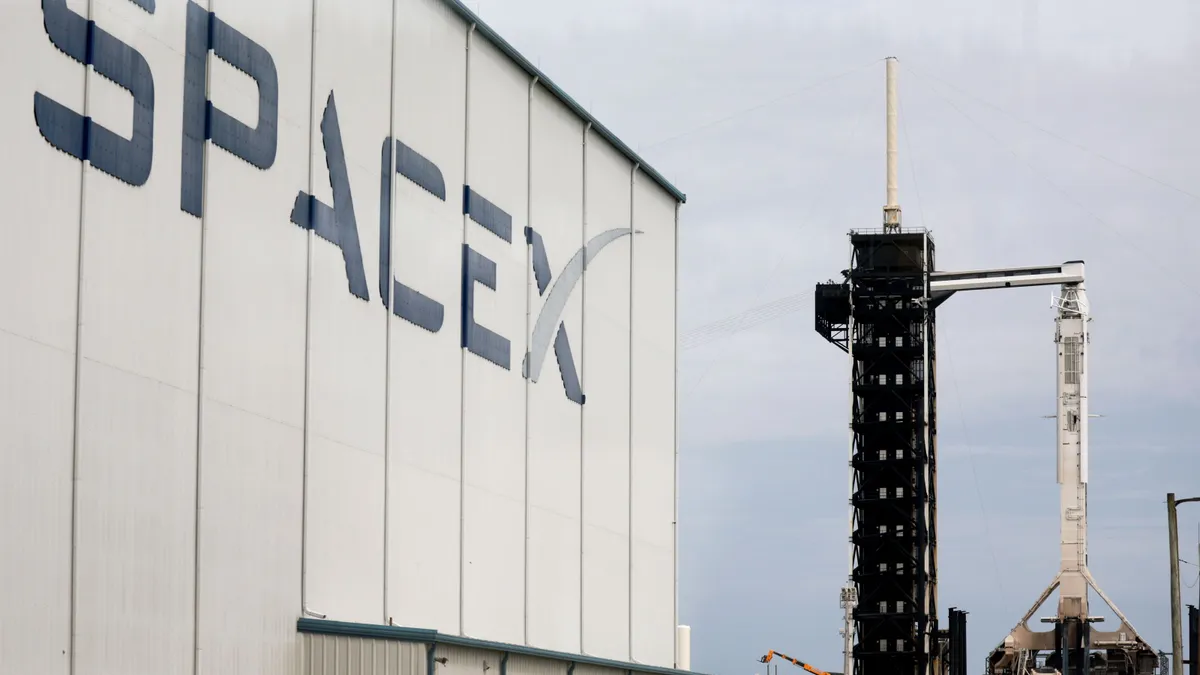This feature is part of a series that takes an in-depth look at drones in construction. To view other posts in the series, check out the spotlight page.
The air above construction job sites could one day be abuzz with activity if the small unmanned aerial vehicle category continues its recent trajectory. This past summer, the Federal Aviation Administration handed down its final rules on the use of small UAVs, or drones, for commercial applications. While the regulations didn’t meet every item on advocates' wish lists — operators must get the FAA’s approval to fly at night and over most people as well as keep the drone in their line of sight when in use — they represent a major step toward further adoption and more creative uses of drones in the industry.
That’s because the regulations took some of the most common applications of drone technology and made them permissible under Section 107 of the Federal Aviation Regulations, without requiring each project to obtain the FAA’s approval on its own.
Prior to that, companies had to undergo the lengthy process of obtaining exemptions to use drones or took their chances by operating without the FAA’s consent. "Many more were waiting in the wings and were hesitant to commit because they didn’t quite understand what the legal ramifications would be, technically or practically speaking," said Jonathan Ziss, a partner in the Philadelphia office of Goldberg Segalla who focuses on the aviation industry.
The regulations aim to make it easier to use drones in industries from construction and agriculture to photography and media. "It settles the regulatory landscape and, as a result, it gives potential operators or users greater confidence in the legal environment that they are operating in," Ziss said.
But Part 107 is an early step in the legal life of UAV technology, which in its own respect is still relatively nascent. Legal experts note that a complex web of local and state rules add other layers of consideration atop the new federal regulations. And many of the most anticipated drone uses — such as moving heavy equipment across a job site, allowing a single operator to run an entire fleet solo or simply flying at night — still require a waiver, and those take time to obtain.
"Once the FAA creates its rules for expanded operations within the next year or two ... by just extending the rule, we’re going to see tremendous efficiencies and benefits derived from those operations," said Diana Marina Cooper, vice president of legal and policy affairs at drone services company PrecisionHawk, which provides remote sensing and data-processing tools and services for UAVs.
In construction, drones are here to stay. What their contribution will be has everything to do with how willing today's operators are to fly in the face of the law — legally, that is. The legislative landscape for drones in this industry is only beginning to take shape, and regulatory changes and technological evolution are poised to keep it continually in flux. Here’s what you need to know about how to keep up.
What still needs an exemption?
The visual line of site requirement — which mandates that an operator must keep the drone in view while it’s in the air — is one factor of Part 107 poised to slow broad adoption of and advances in drone technology for construction. Another is payload, or how much weight the drone can carry. Currently, each UAV can weigh up to 55 pounds, including an attached load, in flight. That suits small hand tools — or, in the case of Google parent Alphabet and Virginia Tech University, burritos — but it makes it less likely that drones will replace cranes hoisting heavy HVAC equipment to the roofs of multi-story buildings anytime soon.
Operators also must still obtain a waiver to fly over people who haven’t been pre-approved as part of the project for which the drone’s use was permitted. In August 2016, CNN snagged the first and so far only FAA-issued exemption to fly drones in this manner. However, its drone, which weighs less than 2 pounds, is tethered to a handheld controller, much like a kite. Many advocates seek free-flying UAVs for such applications.
One positive change in 107, drone advocates say, is that operators no longer need a sport pilot’s license to fly UAVs. Instead, they are now required to complete an aeronautical knowledge test. "It just makes more sense for the industry," Cooper said. "There isn’t that much overlap of capabilities in terms of flying manned aircraft versus unmanned aircraft."
"Once the FAA creates its rules for expanded operations within the next year or two ... we’re going to see tremendous efficiencies and benefits derived from those operations."

Diana Marina Cooper
Vice president of legal and policy affairs, PrecisionHawk
Another recent 107 exemption was awarded to Intel in September to operate a drone after dark (the most common waiver requested today), following a separate exemption — that one under Section 333 of the Federal Aviation Regulations — in May for a single pilot to fly multiple UAVs. In August, the FAA gave PrecisionHawk permission to fly its drones out of the operator’s sight line.
Cooper said PrecisionHawk spent a year studying how far in the distance humans can detect manned aircraft with the naked eye — 2.5 nautical miles — to provide the necessary support for its waiver bid. "If you’re the first company trying to get a unique waiver, there’s a lot of heavy lifting on your end to prove that safety case," she said, advising companies interested in doing the same to review similar 107 waivers in the FAA system and see which company got it and how.
Her team is working with NASA’s Unmanned Aircraft System Traffic Management program to develop technology that allows various users in an airspace to be authenticated and, thus, monitored and managed by way of flight plans and other data-exchange protocols, allowing drones to share the skies with other aircrafts.
A 'crazy quilt' of drone rules
The complex web of local, state and federal regulations has encouraged many construction companies that want to use drones to consult third-party service providers who specialize in the market sector and locale in which they’d like to fly. Airware, 3DRobotics, DJI and PrecisionHawk are just a few examples of companies that provide drone-based software as a service (SaaS) solutions to construction companies.
Cooper noted that several hundred drone-specific state and local rules were introduced in 2016, and that they fit uniquely in the overall federal safety-minded framework.
Federal regulations preempt state and local rules. However, rules, regulations and laws at all levels are to be taken seriously. The FAA focuses on aircraft and operational safety, and local and state agencies are often concerned with other issues, such as personal privacy and data security.
Together, they’re meant to provide operators with comprehensive coverage, but early adopters are still ironing out a hierarchy of users — from news agencies to police to land surveyors and more — whose needs, such as access to an event or crime scene, may overlap.
"It’s a crazy quilt," Ziss said. "The 50 states have 50 states’ worth of laws that operate in, you could say, concentric circles around the core FAA use regulations. … The FAA understands that technology is evolving and evolving quickly. They’ve been open to criticism because they haven’t been able to keep up because the technology went through this explosion of progress in a very, very short period."
Slow approvals, budget cuts could keep drones grounded
Earlier this month, Cooper appeared alongside other drone industry representatives before the U.S. Senate Committee on Commerce, Science and Transportation to discuss public policy related to integrating UAVs in the national airspace — that is, above the 400-foot threshold currently allowed through Part 107. Such a move is unlikely to happen in the near-term, Cooper said, but mechanisms like budget cuts and deregulation could slow it considerably or halt it altogether.
In his statement before the panel, DJI vice president of policy and legal affairs Brendan Schulman called attention to the role of regulations in the UAV space: "We are in the somewhat unique position of being an early-stage technology industry that craves more regulation," he said in his statement. "But it has to be the right kind of regulation."
"The FAA ... has been open to criticism because they haven’t been able to keep up because the technology went through this explosion of progress in a very, very short period."

Jonathan Ziss
Partner, Goldberg Segalla
The next step for small UAV legislation will likely be clarified during a May meeting of the FAA Drone Advisory Committee, when a task group is expected to release proposed solutions to issues concerning local enforcement of drone rules. Privatization of air traffic control, as called out in Presidential Donald Trump’s proposed budget and discussed among some Republican Congressional representatives, could pose another hurdle — as will funding cuts. The current budget proposal calls for the Department of Transportation, under which the FAA operates, to see its spending reduced by 13%.
"If the FAA is required to cut funding, it’s going to be pretty devastating to the drone industry," Cooper said. "The FAA is lacking a lot of technical systems to even support something like unmanned traffic management systems, so they need a back-end that can communicate with [the] private companies that have developed these [technologies], which will need to be able to communicate back and forth with the FAA."
The FAA's notice of proposed rulemaking for operations over people was supposed to be out late last year but was put on hold due to concerns from national security agencies, according to Cooper. "The industry is trying to find out more information and trying to open dialogue with those agencies so we can discuss technology solutions that we have available that might help mitigate their concerns," Cooper said.
The ability to operate drones over people is separate from Part 107, but the current rules are intentionally malleable to the research and development needs of the construction industry, and Section 333 exemptions remain open to construction companies and other providers serving the space to make the case for innovative uses of the technology that could support future rulemaking.
"Part 107 is written … to keep the lattice of regulation loose enough so that it’s going to be responsive to new and, in particular, technologies that haven’t even been imagined yet," Ziss said. "They’re trying to not write their regulations specific to a technology because technology is evolving so quickly."



